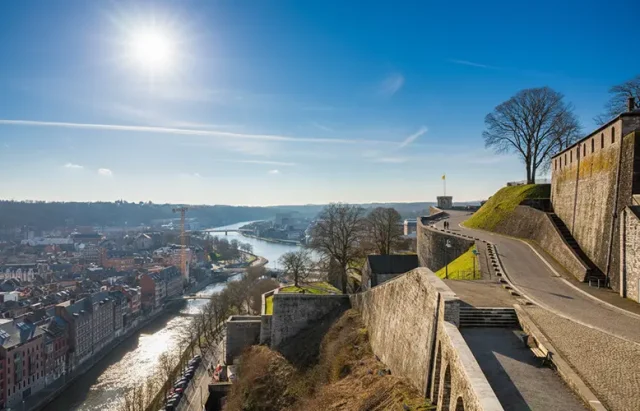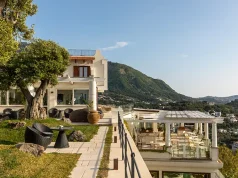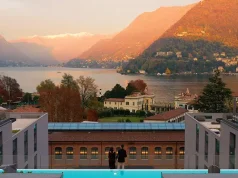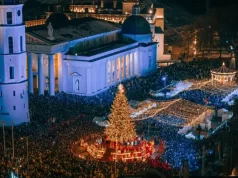
At the point where the Meuse and the Sambre meet, Namur unfolds in slow motion. The rivers curve around the city like open arms, reflecting bridges, towers, and the green hills that rise beyond. From the water, Namur looks both complete and unhurried — a place that has learned how to exist between movement and stillness.
The city’s history reaches back to the Romans, but what defines it now is a gentler kind of endurance. It is a city of corners and perspectives, where each turn reveals a different angle of light on stone. The pace is measured, the soundscape soft: footsteps on cobbles, the murmur of water, the faint ring of a bicycle bell.
Between Two Currents
The Meuse comes from the French Ardennes, wide and reflective. The Sambre flows from the south, narrower and darker. Where they join, the waters mingle but never clash. You can see the difference in color from the Citadel above — one silver, one brown, both moving slowly toward the north.
The rivers shaped Namur’s geography and its temperament. They brought trade, but also calm, and their curves define how the city breathes. Streets follow the water, bridges cross it in quiet rhythm, and cafés open their doors toward the light. Even at the busiest hours, the sound of the current remains.
Walking along the quays, you sense how much the rivers still decide. Their presence is constant but never demanding, a reminder that the flow of time can be steady rather than fast.
The Citadel Above
High above the city, the Citadel of Namur sits like a crown. Built and rebuilt over centuries, it has served as fortress, lookout, and refuge. The path up the hill winds between trees and old stone walls. From the top, the view opens across the valley — rooftops below, fields in the distance, and the two rivers shining as they converge.
The Citadel is massive but not imposing. Its walls have softened with age, covered in moss and light. Inside, tunnels run through the rock, connecting barracks, gates, and hidden passages. It feels like a city within a city, a map of endurance carved into the hillside.
From here, you can watch the light change over the water. In the morning, the rivers are silver; by evening, they turn to gold. The shift is slow and almost imperceptible, like breath.
The Streets Below
Down in the old town, life moves quietly. Narrow lanes run between rows of stone houses, their façades painted in muted tones of cream and gray. Churches rise from small squares, their bells marking the hours that seem to pass differently here.
Shops open late, and cafés stay busy long after sunset. The smell of roasted coffee mingles with the scent of water carried by the wind. On weekends, markets fill the main square with fruit, cheese, and flowers, while the sound of a violin drifts from somewhere near the bridge.
Everything happens in a kind of measured rhythm. The city feels old but never tired — comfortable in its continuity.
Along the River Paths
The rivers define not just the city’s shape but its movement. Paths follow their curves out into the countryside, shaded by willows and lined with benches. Cyclists ride quietly along the embankments, passing fishermen, walkers, and the occasional barge moving upstream.
This part of Belgium is ideal for slow travel, and many Belgium cycling holidays include Namur in their routes. The terrain is gentle, the scenery unfolding in long, reflective stretches: water on one side, fields or cliffs on the other. Each turn brings another bridge, another village, another shift in the quality of light.
Cycling here feels almost meditative. The landscape moves past at the same pace as your thoughts, and the sound of the river stays with you long after you stop.
The Bridges of Namur
The city’s bridges are its quiet monuments. The oldest, the Pont de Jambes, connects the old quarter to the district across the Meuse. Its stone arches are worn smooth by centuries of use, and at sunset they glow softly against the water. Further downstream, newer bridges of metal and glass reflect the same light, linking past and present without tension.
Standing on any of them, you can see how the rivers hold the city together. Boats drift beneath, slow and deliberate, their wakes spreading ripples that catch the evening sun. It is the kind of beauty that asks for nothing — a balance of motion and stillness that feels inevitable.
The Edge of the Ardennes
South of Namur, the land begins to rise. Forests cover the hills, and small villages appear among fields of rye and stone walls. The rivers narrow and turn clear, running faster through the valleys. This is the beginning of the Ardennes — a landscape of quiet roads, hidden castles, and deep green light.
The transition from city to countryside happens gradually. One moment you are following a riverside street, the next you are surrounded by trees. The air cools, the wind smells of pine, and the sound of water becomes sharper. The balance of Namur continues, but in a different form — less urban, more elemental.
Evening on the Quays
Back in the city, evening gathers slowly. The rivers take on the color of the sky, deep blue and still. Lights appear along the quays, reflected in the water like strings of gold. People walk home in small groups, their conversations low, their footsteps echoing off the stone.
The cafés fill again, and the air carries the scent of wine and cooking. Music drifts from open doors. On the opposite bank, the Citadel stands in silhouette, its shape softened by the last light.
It is a scene that repeats itself every night — not a performance, but a rhythm. The same water, the same light, the same calm persistence.
The Balance of Water and Stone
Namur’s beauty lies in its proportions. It is neither large nor small, neither fast nor still. Everything exists in quiet dialogue — the rivers and the hills, the old and the new, the movement of people and the permanence of place.
The city has learned to listen to its geography. It does not fight the rivers; it grows with them. From the Citadel to the bridges, from the quays to the forest beyond, Namur feels like a single composition written in water and stone.
Standing at the point where the Meuse and the Sambre join, you can feel that balance clearly — not as an idea, but as a presence. The rivers merge, the light fades, and the city, content in its stillness, continues to flow.





